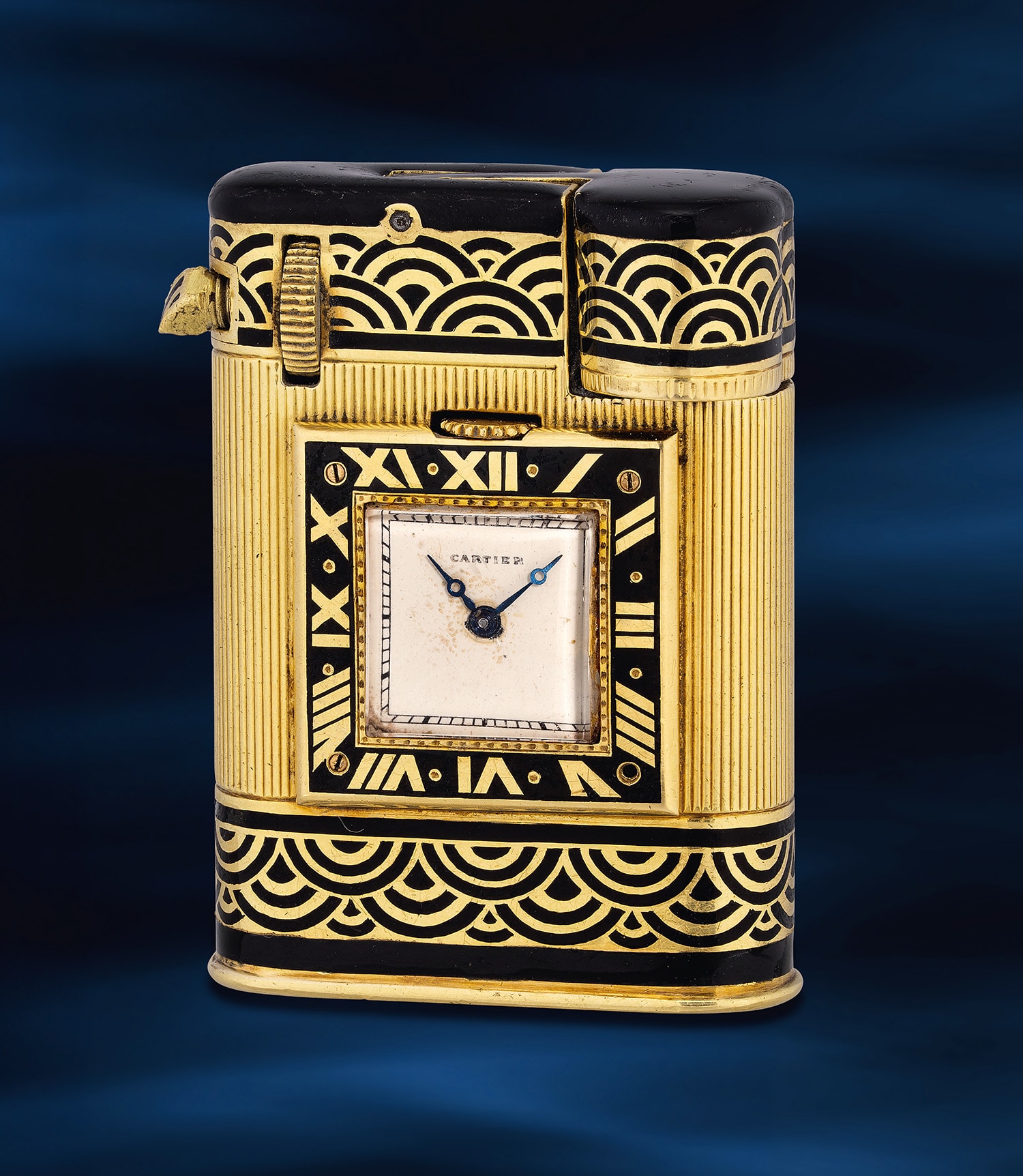
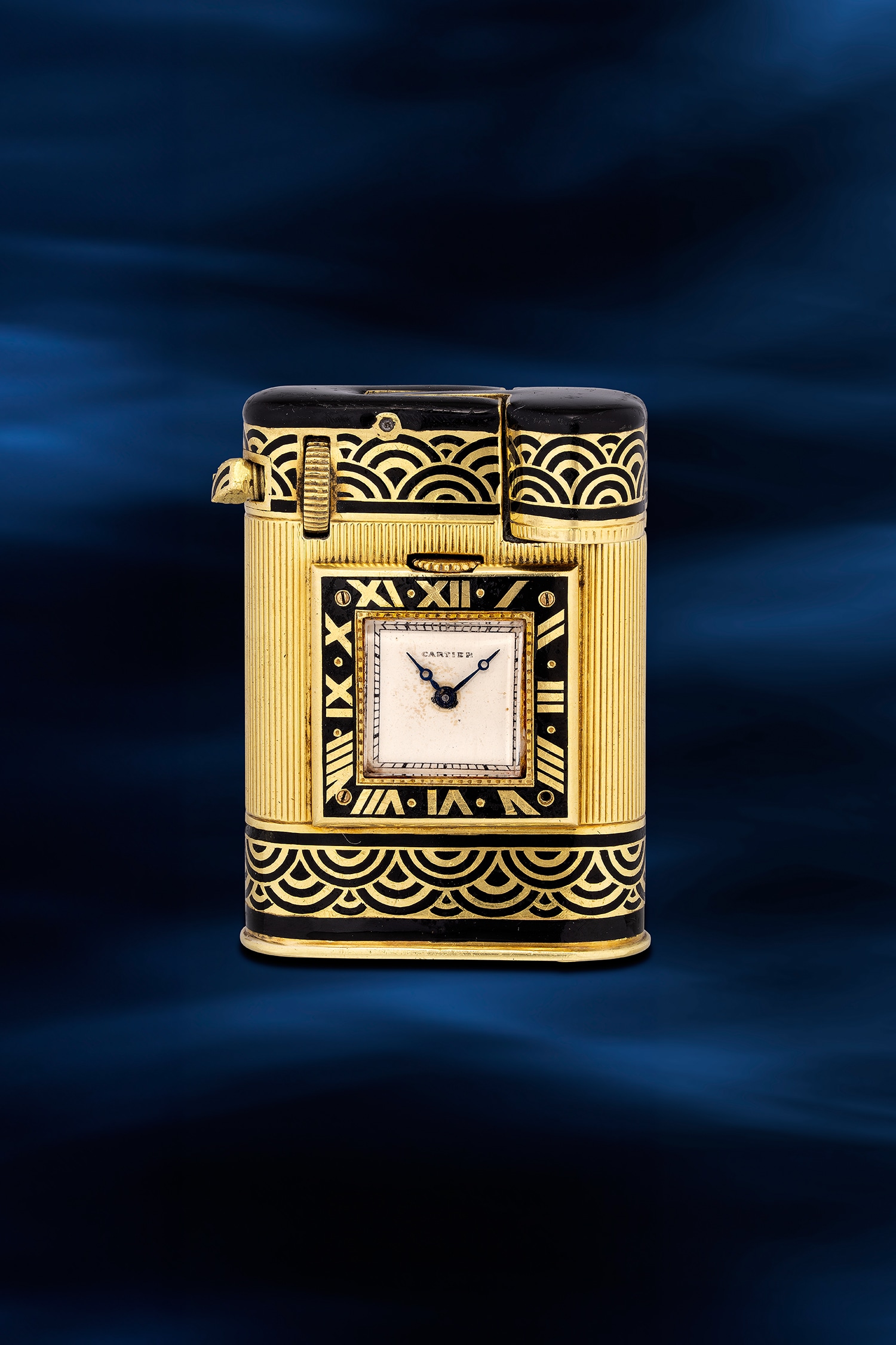

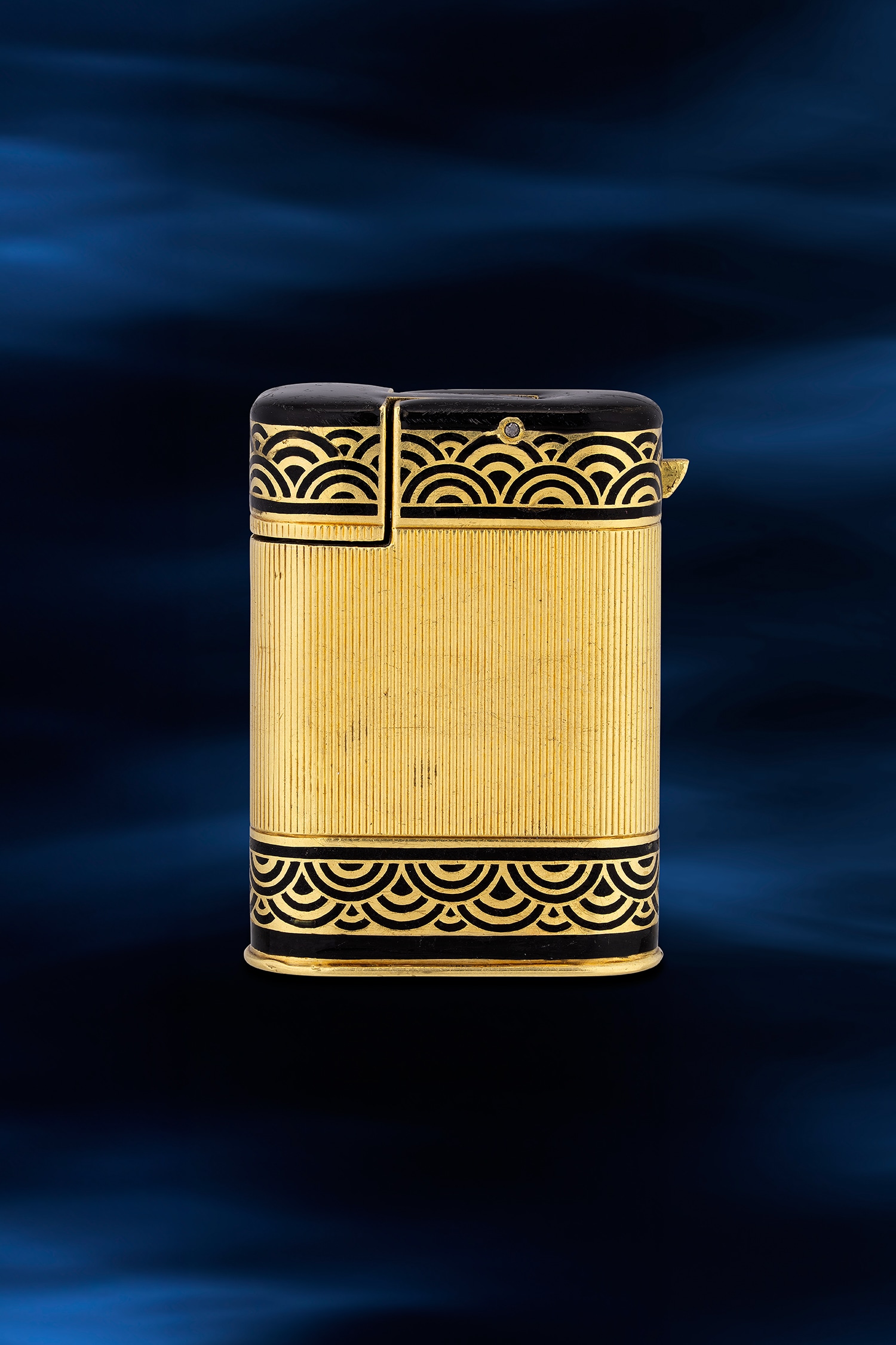
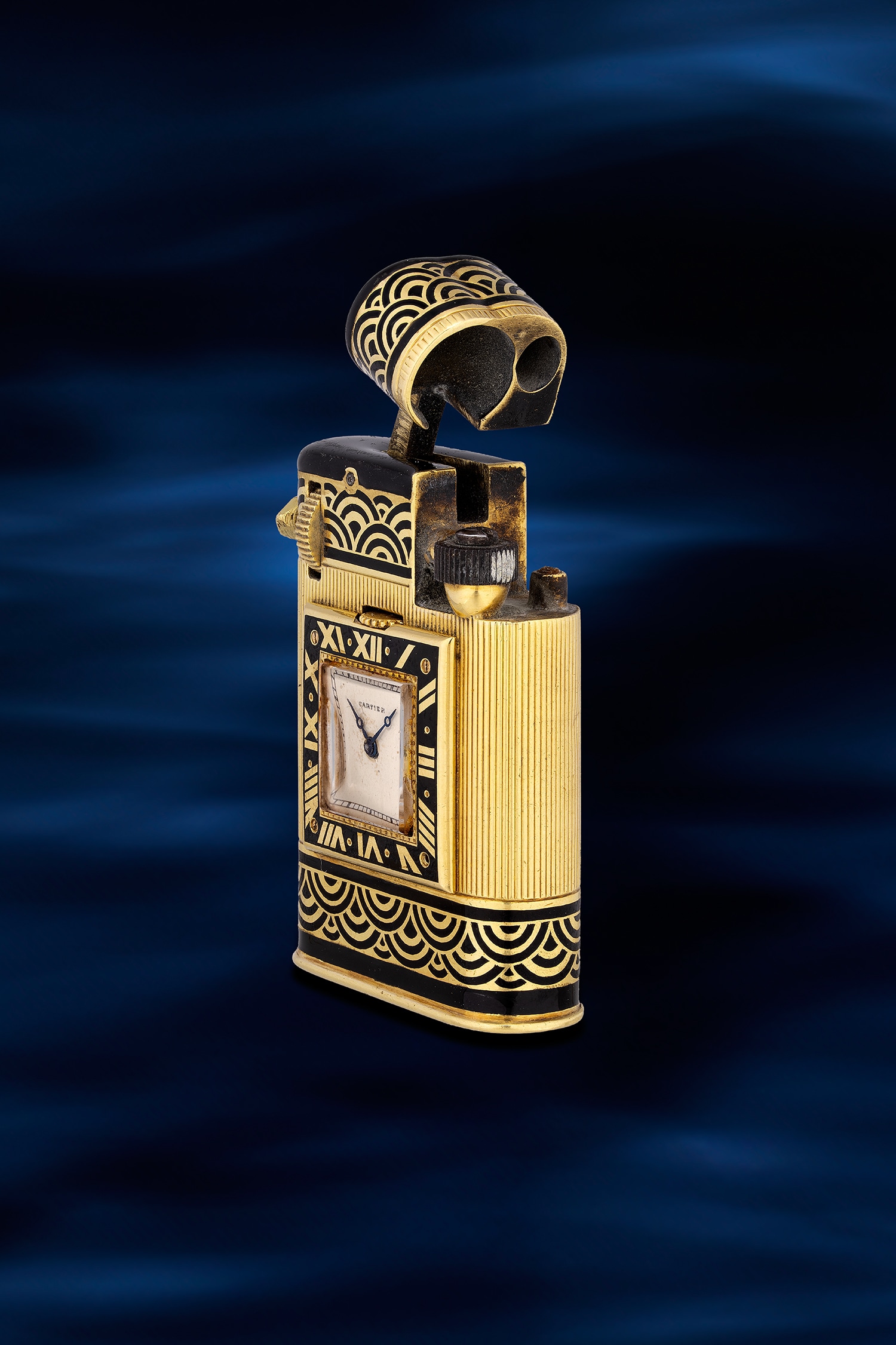
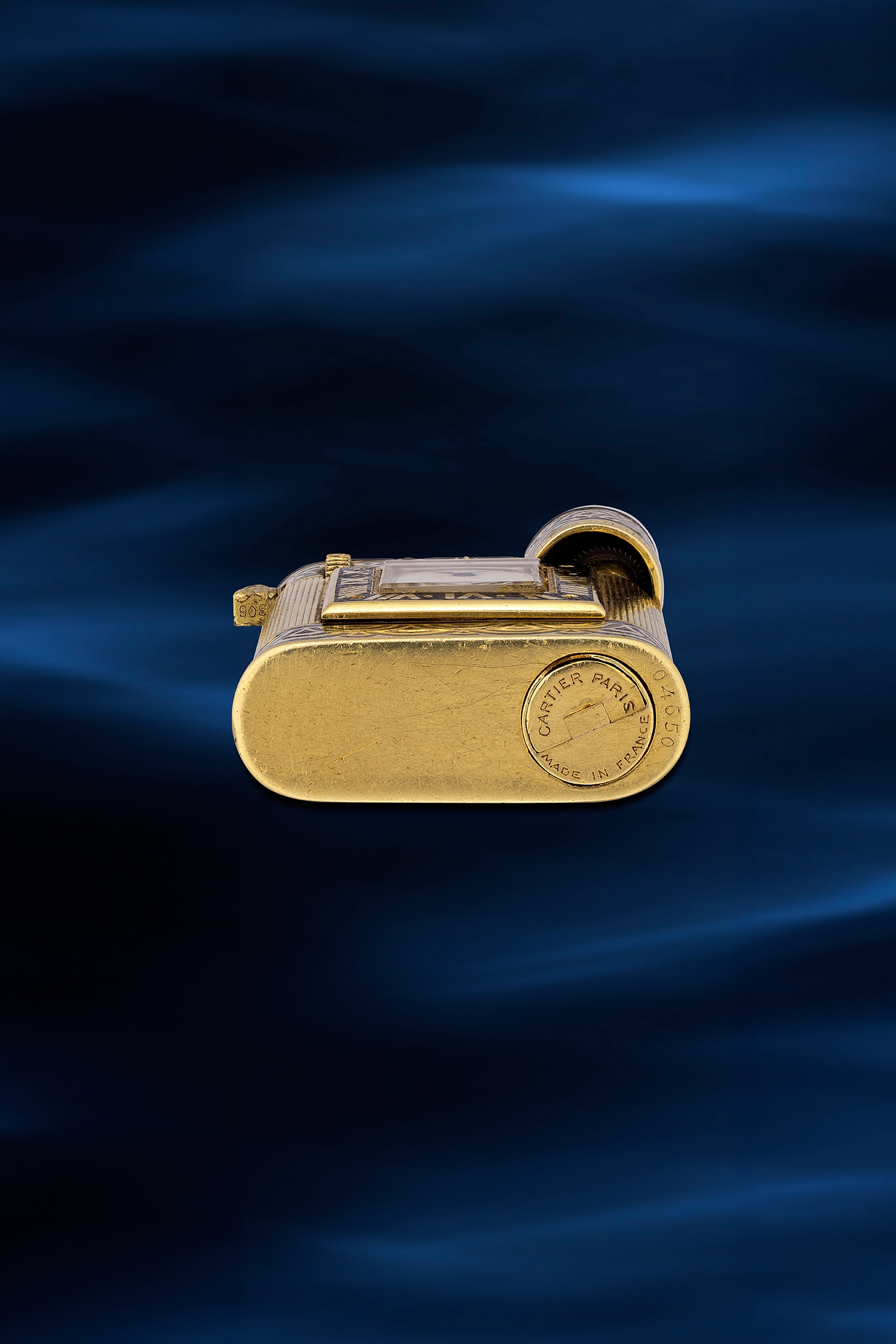
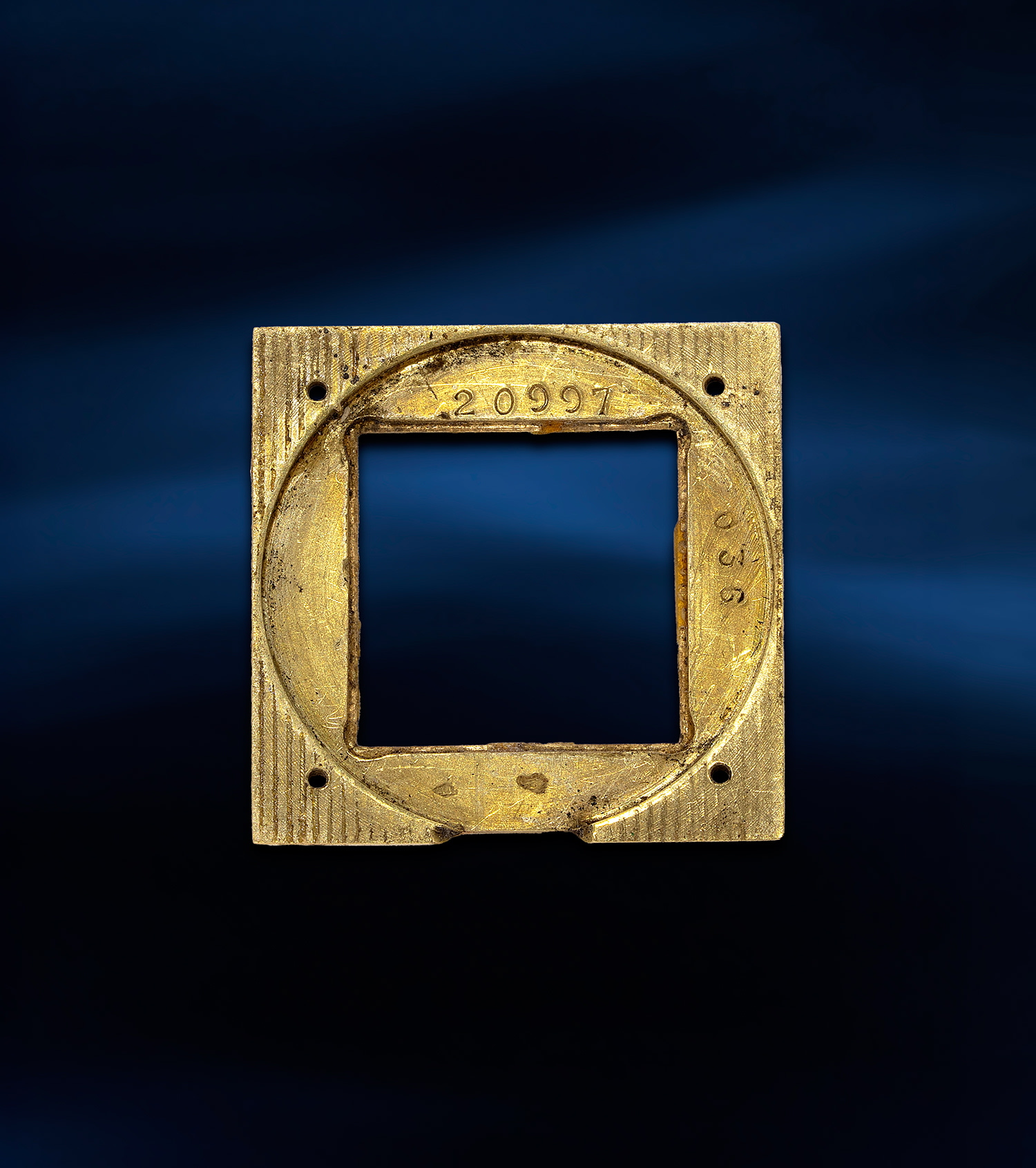
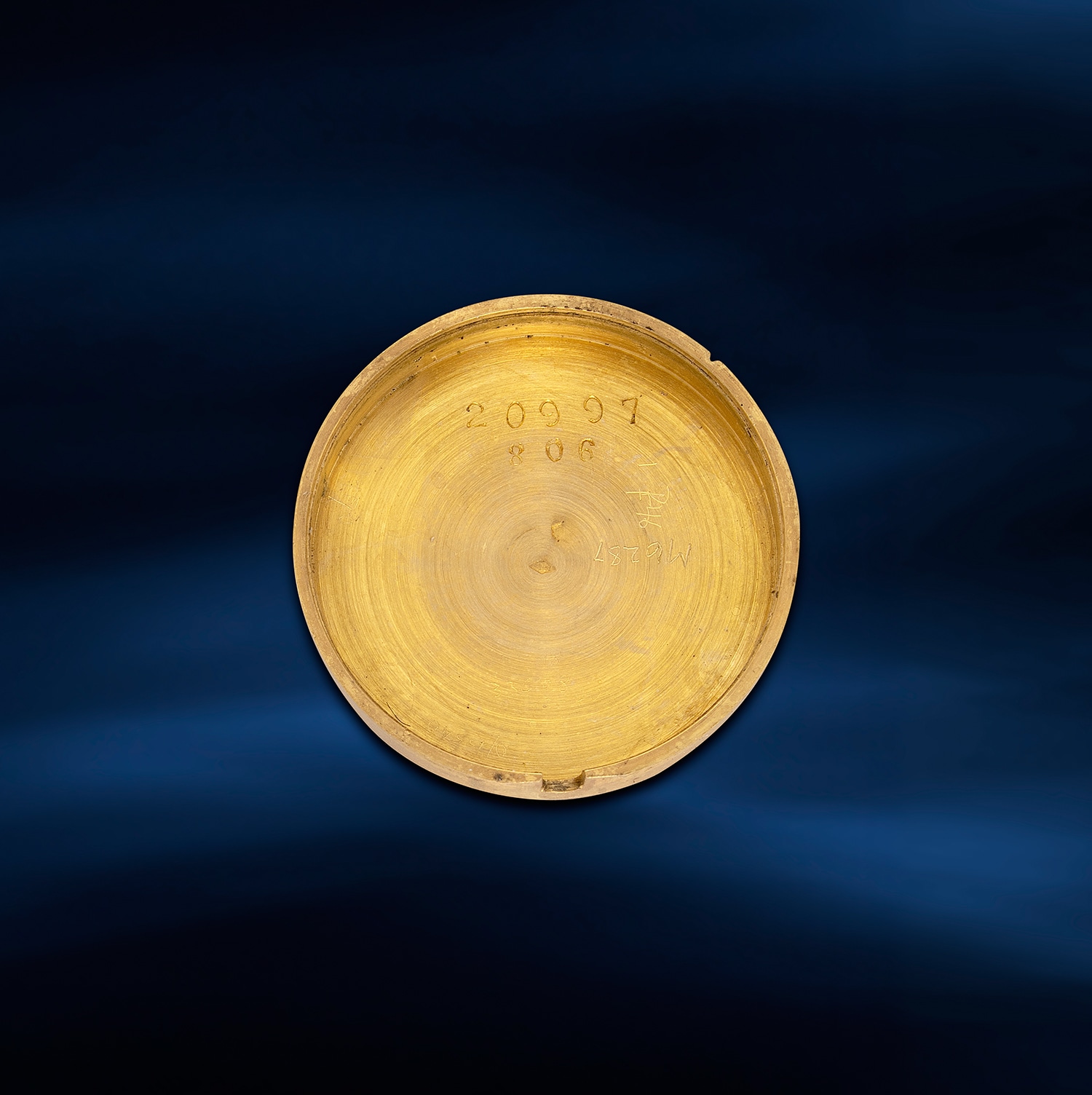
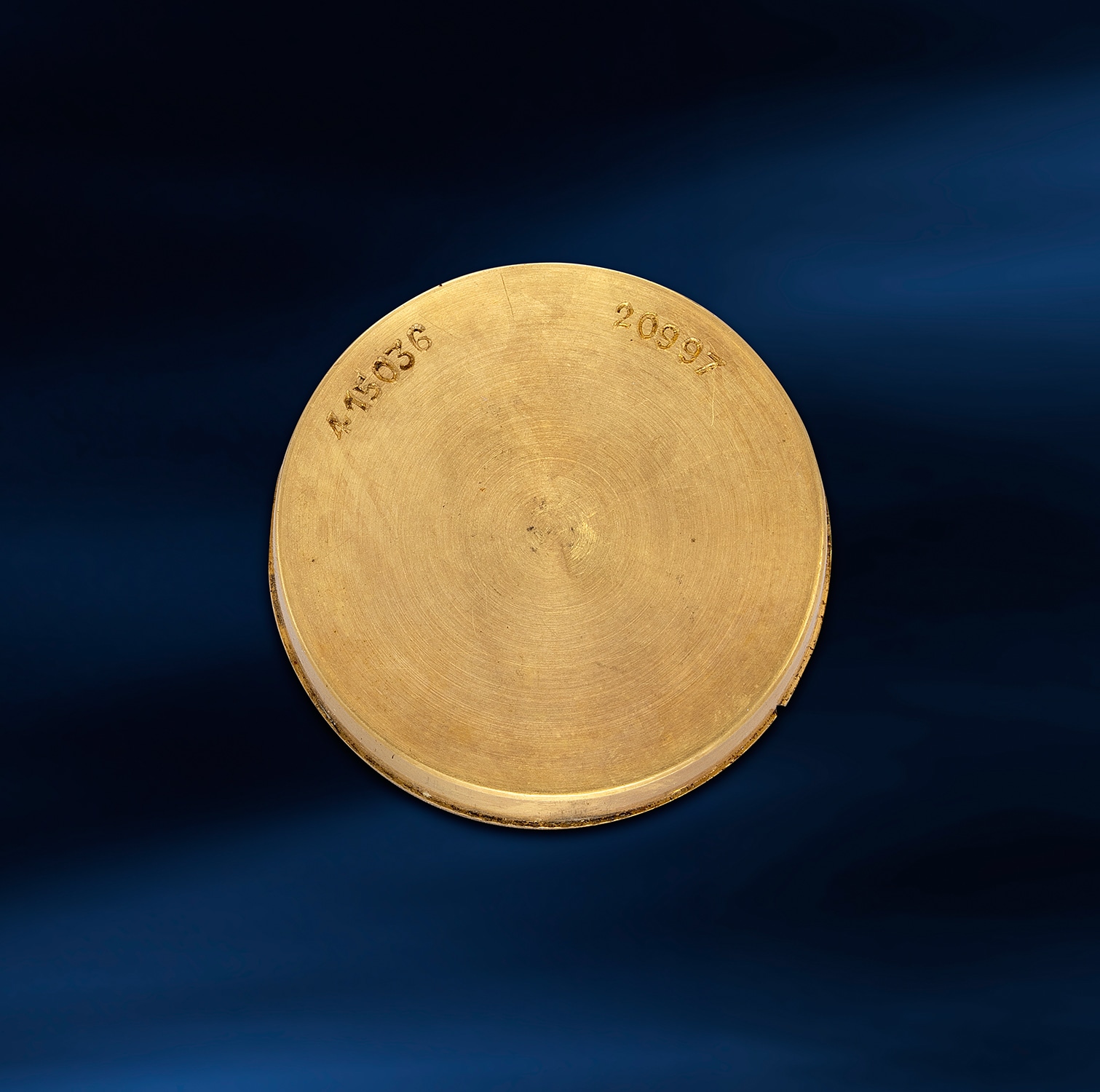
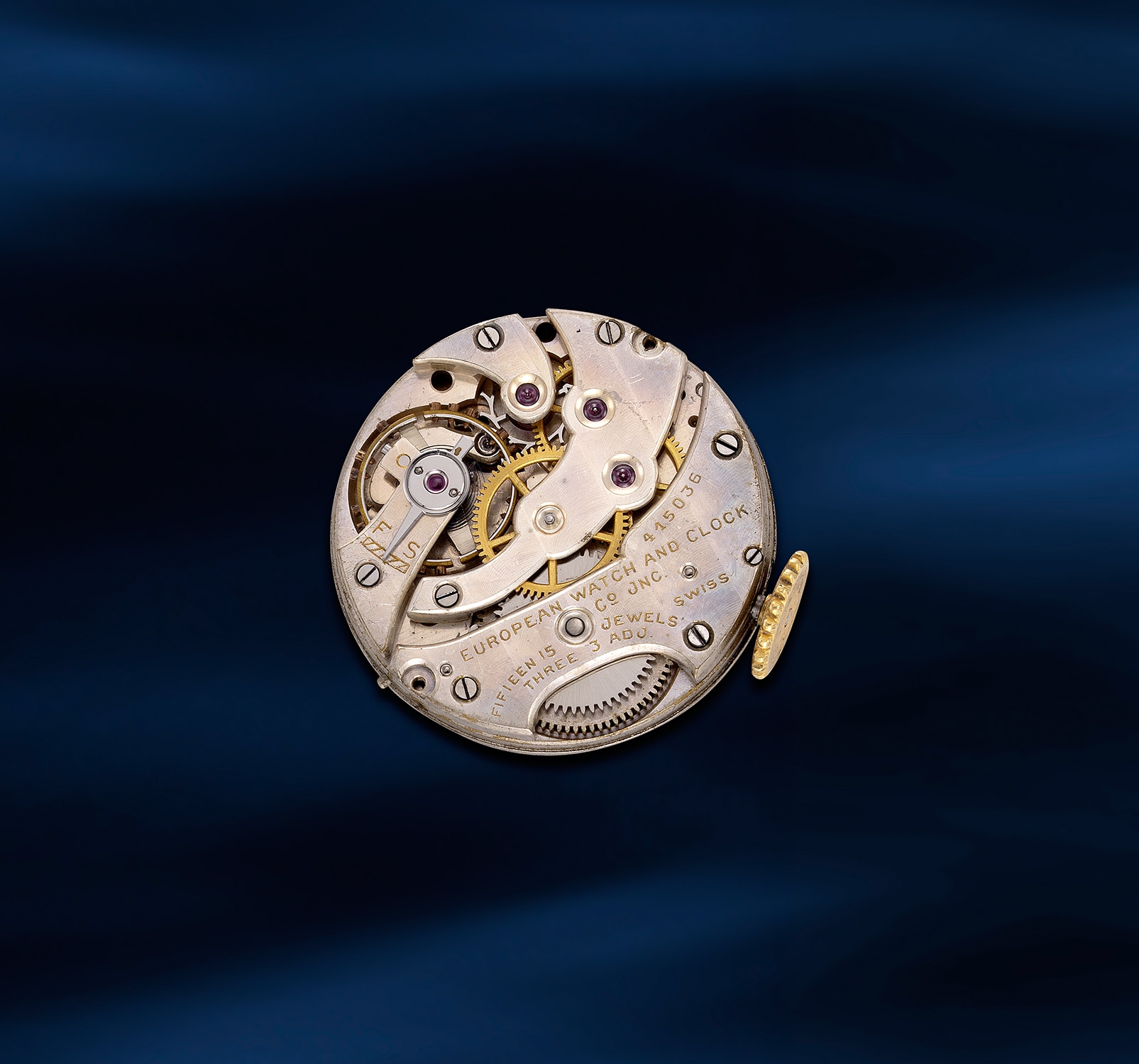










1025
Cartier
A rare and elegant yellow gold art deco lighter watch with enamel
Full-Cataloguing
In an attempt to reach a wider clientele base, Cartier established a new division to provide a larger range of beautiful yet functional objects, The Department S. S stood for silver, the division at that time aimed to provide a relatively more ‘affordable’ range of items, the collection eventually flourished into wider range of materials as demand grew. Charles Jacqueau was the head of Department S and thus, designs for unusual objects from letter openers, cigarette cases, writing instruments and lighters all incorporated with a watch were born. Part of the high society, Louis Cartier would often offer chaps cigarettes at parties from his chic Cartier case, or a light from his gold Cartier lighter, he was his own ambassador for his products. A perfect specimen from the era, the present Art Deco lighter travels back in time. A lighter and a watch at the same time, the pin striped yellow gold case decorated with enamel was made in Paris. A fascinating and witty creation with sartorial splendor, the present object is preserved with crisp hallmarks and corresponding numbers stamped throughout, furthermore the elegant blued Breguet hands are powered by a European Watch and Clock Co movement.
Cartier
FrenchWith the Constitution of 1848 came a new standard for luxury in France. Founded one year prior by Louis-Francois Cartier, the house of Cartier was one of the first to use platinum in jewelry making. This incredibly expensive material became the stepping-stone for Cartier to experiment in form, mechanisms and attitude. It helped men move from pocket watches to wristwatches, effectively making the watch much more functional and prominent in a man's overall wardrobe.
Cartier did not only touch on functionality. Inspired by a commissioned painting by George Barbier featuring a black panther at the feet of an elegantly bejeweled woman, Cartier began incorporating wild animals in his designs—most notably, Cartier Panthère rings, bangle bracelets and watches. Yet it wasn't until the late 1960s that the house of Cartier debuted their iconic yellow and rose gold LOVE collection, which includes the famous bracelet that only a special screwdriver can open.